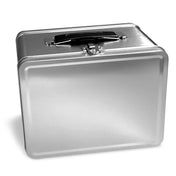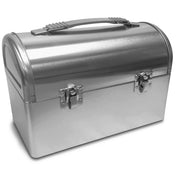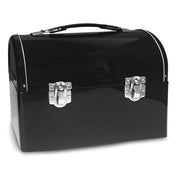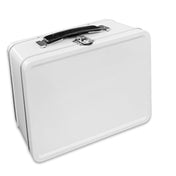While we may know what constitutes a reasonably healthy diet, the tricky part is putting it all together into a sustainable eating plan. So if you are wanting to tick the box on an ideal day of eating, here are some of the key times of day and what you should be aiming to eat and drink when.
FIRST THING WHEN YOU WAKE UP
As the human body is more than 70 per cent water, the first thing that should be on our minds when we wake up is re-hydrating. A glass or two of warm water with lemon, herbal or clear tea are your best fluid options in the morning.
BY 8AM
To optimize metabolism, we need to eat breakfast as early as possible and waiting until 9 or 10am is too late in the day. Choose both low GI carbs such as wholegrain cereal or bread and team with filling protein options such as low fat milk, eggs or baked beans. If you regularly find yourself skipping breakfast, keep a supply of hard boiled eggs, tins of baked beans or Greek yoghurt on hand to grab as you leave the house. If you love your coffee, enjoying it with breakfast is best for both your digestion and your metabolism.
MID-MORNING
If you have enjoyed the right balance of carbs and protein at breakfast, you should be feeling hungry 2-3 hours later — try not to be scared of hunger, hunger is a good thing as it indicates that your body is burning food efficiently, not dissimilar to stoking the fire! Light 150-200 calorie snacks to enjoy at this time include Greek style yogurt, a piece of fruit with cottage cheese or wholegrain crackers with cheese or low sugar peanut butter.
1PM
Lunch is next and this is the time things start to go pear-shaped nutritionally. Remember the rules of optimal metabolism and that it is better to consume the bulk of your calories during the first half of the day. This means that 2 or 3pm is too late to eat lunch. Instead aim to enjoy your lunch, sitting down but away from your desk by 1pm. To achieve nutritional balance, ensure that your lunch choices contain both 2-3 cups of salad or vegetables and 80-100g of protein rich foods such as chicken breast, tuna or salmon. Plain ham or cheese sandwiches, tuna salads or vegetable soups are all light options but they do not contain the bulk and carbohydrate/protein balance that is required to keep you full throughout the afternoon. Good meal options that contain the right mix of nutrition include tuna, salmon or chicken salads teamed with beans or grain bread, vegetable based soup with wholegrain crackers and tuna or a small amount of chicken or mince with pasta and 2-3 cups of vegetables or salad. To avoid the post lunch slump and sugar cravings that can accompany it, as well as cleanse your palate, enjoy a licorice or peppermint tea straight after lunch for no calories at all.
MID-AFTERNOON
If you have enjoyed a well balanced lunch, you should be satisfied until the middle of the afternoon. Late afternoon is time when blood sugar levels drop and the cravings for sweet foods, which can drive many to raid the vending machine or pantry for a quick sugar hit. Your best food choices at this time are protein rich foods, which will help to manage sugar cravings while also tiding you over until dinner. Try crackers with hummus, a protein shake or bar or nut-based snacks to strike a perfect balance between a small amount of carbs and protein for fullness.
6-7PM
Eating dinner late is one of biggest dietary mistakes we make. A simple trick to help manage this is to keep your dinner lighter, the later you find yourself eating it. Unless you are exercising for more than an hour each day, you are unlikely to need large volumes of energy dense rice and pastas at night, so keep it light with grills, vegetables and salads. If you find yourself routinely eating after 8pm, you may be better to have a light dinner of soup or salad and enjoy your heavier, main meal at lunchtime. The decision to include dessert or supper as part of your daily food routine is largely up to the individual. If you eat relatively well, the average person will have 400-600 extra kilo-joules a day to play with which equates to a small glass of wine, a row or 20g of chocolate or a small serve of ice cream or low fat, low sugar dessert. Another option may be a small piece, or 20g of cheese will also help to protect tooth enamel as well as manage sugar cravings. Ideally aim to finish eating each day so that you have 10-12 hours overnight without food which will in turn help you to wake up hungry the next morning.
Original article by Susie Burrell appears on News.com.au.
Photograph by Direct Media / StockSnap






